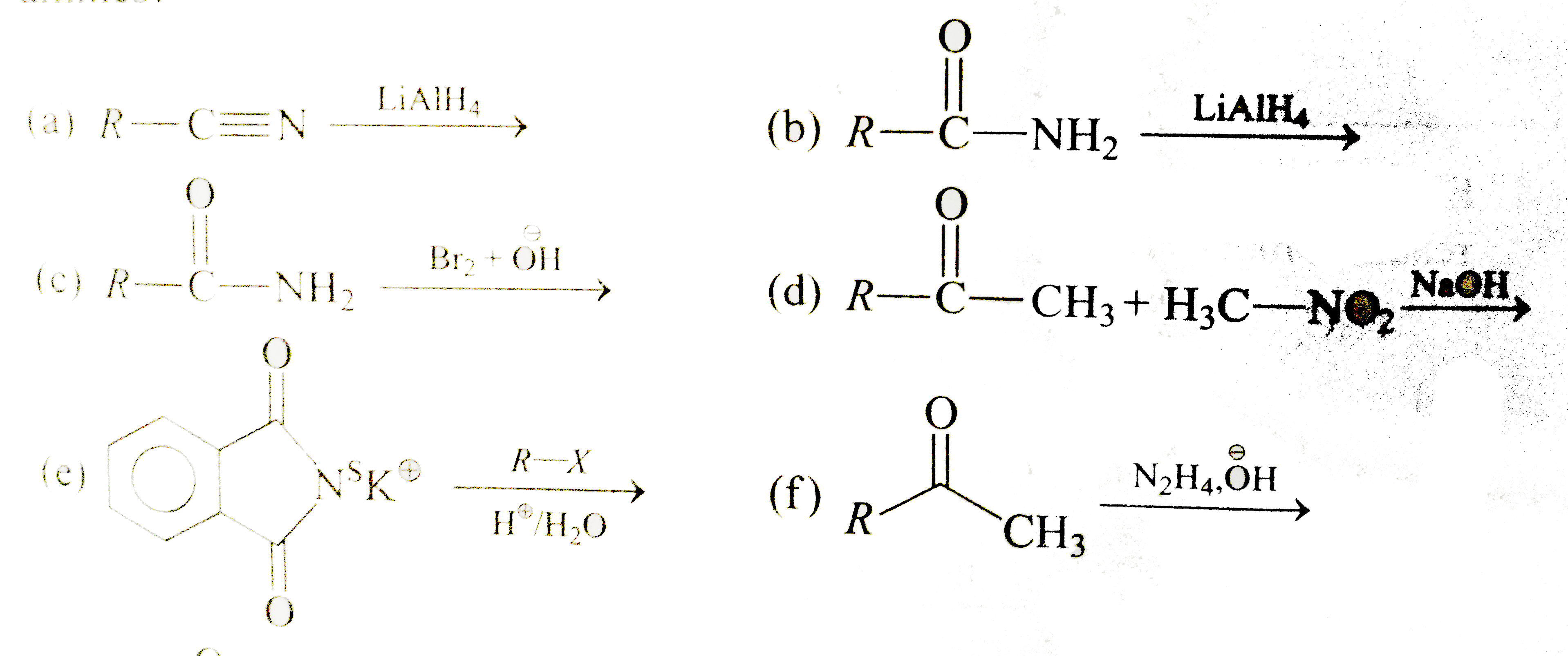ArH+R−O∣∣C−CILewis acid−−−−−→Ar−O∣∣C−R+HCI is an example of
Friedel-Craft alkylation
Friedel-Craft acylation
Cannizzaro reaction
Claisen condensation
The correct Answer is:B
To solve the question, we need to analyze the given reaction step by step and identify what type of reaction it represents.
1. Understanding the Reactants:
- The reactants are ArH (an aromatic compound) and R-C(=O)-Cl (an acyl chloride).
- ArH typically represents an aromatic hydrocarbon, where "Ar" signifies the aromatic ring and "H" indicates a hydrogen atom attached to it.
2. Role of Lewis Acid:
- A Lewis acid is a substance that can accept an electron pair. In this reaction, the Lewis acid facilitates the reaction between ArH and the acyl chloride.
- Common Lewis acids include AlCl3, BF3, etc., which can activate the acyl chloride by forming a complex.
3. Mechanism of Reaction:
- The Lewis acid interacts with the acyl chloride, making the carbonyl carbon more electrophilic.
- The aromatic compound (ArH) acts as a nucleophile and attacks the electrophilic carbon of the activated acyl chloride.
4. Formation of the Product:
- The result of this nucleophilic attack is the formation of an aromatic ketone (Ar-C(=O)-R).
- During this process, HCl is released as a byproduct.
5. Identifying the Reaction Type:
- This reaction is an example of Friedel-Crafts acylation. It is a type of electrophilic aromatic substitution where an acyl group is introduced into the aromatic ring.
Final Answer:
The reaction ArH+R−C(=O)−Cl(∈thepresenceofLewisacid)→Ar−C(=O)−R+HCl is an example of Friedel-Crafts acylation.
- The reactants are ArH (an aromatic compound) and R-C(=O)-Cl (an acyl chloride).
- ArH typically represents an aromatic hydrocarbon, where "Ar" signifies the aromatic ring and "H" indicates a hydrogen atom attached to it.
- A Lewis acid is a substance that can accept an electron pair. In this reaction, the Lewis acid facilitates the reaction between ArH and the acyl chloride.
- Common Lewis acids include AlCl3, BF3, etc., which can activate the acyl chloride by forming a complex.
- The Lewis acid interacts with the acyl chloride, making the carbonyl carbon more electrophilic.
- The aromatic compound (ArH) acts as a nucleophile and attacks the electrophilic carbon of the activated acyl chloride.
- The result of this nucleophilic attack is the formation of an aromatic ketone (Ar-C(=O)-R).
- During this process, HCl is released as a byproduct.
- This reaction is an example of Friedel-Crafts acylation. It is a type of electrophilic aromatic substitution where an acyl group is introduced into the aromatic ring.
The reaction ArH+R−C(=O)−Cl(∈thepresenceofLewisacid)→Ar−C(=O)−R+HCl is an example of Friedel-Crafts acylation.
Topper's Solved these Questions
- BOOK - ERRORLESS CHAPTER - ALDEHYDES AND KETONES EXERCISE - Critical Thinking Objective Questions21videos
ALDEHYDES AND KETONES
- BOOK - ERRORLESS CHAPTER - ALDEHYDES AND KETONES EXERCISE - JEE Section Only one choice correct answer39videos
ALDEHYDES AND KETONES
- BOOK - ERRORLESS CHAPTER - ALDEHYDES AND KETONES EXERCISE - Ordinary Thinking (Objective Questions) Preparation43videos
ALDEHYDES AND KETONES
- BOOK - ERRORLESS CHAPTER - ALCOHOL, PHENOL AND ETHEREXERCISE - JEE SECTION (JEE Advanced 2018) More than one choice correct answer1videos
ALCOHOL, PHENOL AND ETHER
- BOOK - ERRORLESS CHAPTER - ANALYTICAL CHEMISTRYEXERCISE - JEE Section (Only One Choice Answer)36videos
ANALYTICAL CHEMISTRY
Similar Questions
Knowledge Check
- Question 1 - Select One
R−O∣∣C−O−HReagent X−−−−−→R−O∣∣C−Cl
The reagent X can beAPCl3BPCl5CSOCl2DSO2Cl2 - Question 2 - Select One
The following transformation,
R−O∣∣C−RR'CO3H−−−−−→R−O∣∣C−OR is known as :AOppanauer oxidationBBaeyer-Villiger oxidationCWheland oxidationDClemmensen reduction. - Question 3 - Select One
H−O∣∣C−OH and Me−O∣∣C−OH can be differentitated by :
Aiodoform testBlitmus testCFehlingDesterification test
The correct IUPAC name of the H−O∣∣C−O∣∣C−O∣∣C−OH is
View SolutionCH3−O∣∣C−CH3 and CH3−O∣∣C−H is differentiated by:
View SolutionR−O∣∣C−O−R'+R''OHH⊕⇐⇒R−O∣∣C−O−R''+R'OH
Above reaction is/an example of :View SolutionR−O∣∣C−Cl+Z→R−O∣∣C−R
The reagent Z is :View Solutionदी गई अभिक्रिया में R−O∣∣C−OH(X)−−→R−O∣∣C−O−CH3 (X) क्या होगा?
View Solution


